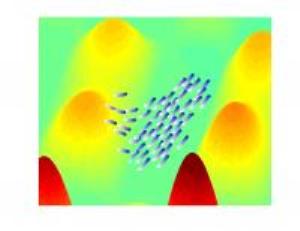Researchers at Tel Aviv University have established bacteria’s superior thinking process through their research work. They have developed a computational model that is capable of explaining bacteria’s ability to move in swarms and they intend to extend the model to man-made technologies such as artificial intelligence, robotics etc.
 bacteria cells
bacteria cells
The research team has discovered that bacteria move in swarms by gathering information about the environment and finding an optimal path for movement. They are able to move in swarms even in rough terrain. By studying bacteria movement patterns, the team plans to work on designing new robots, which are capable of forming intelligent swarms and moving as a group. Such robots can be used in developing micro-robots, which can be used for medical purposes and in de-coding operations in the social networks established through the Internet.
One of the researchers explained that fish, birds and bees also exhibit collective navigational patterns just like bacteria do. Bacteria, being simple organisms have their limitations in dealing with large data or complex noises present in their environments. However, the team has discovered that bacteria exhibit superior survival tactics such as avoidance of hurdles and finding food etc. These skills are attributed to the mechanical, chemical and molecular communication methods of bacteria. One of the researchers claim that bacteria work with a lot of confidence and modify the interactions with peers according to the situation and find an optimised path. When they have a more challenging task at hand they can increase the inter-cell interaction and device a strategy as a group to move through the rough terrain. Further studies revealed that bacterial cells decreased their interaction with other cells when they were confident of the path they were following but at the same time listened to others when their own senses were deteriorating. The research findings when applied to robots will prove beneficial in environments that are complex such as space, underwater and online communications. Applying bacterial cell strategy for movement will be vital in designing robots, which exhibit abilities to adjust according to the environment by interacting with each other.